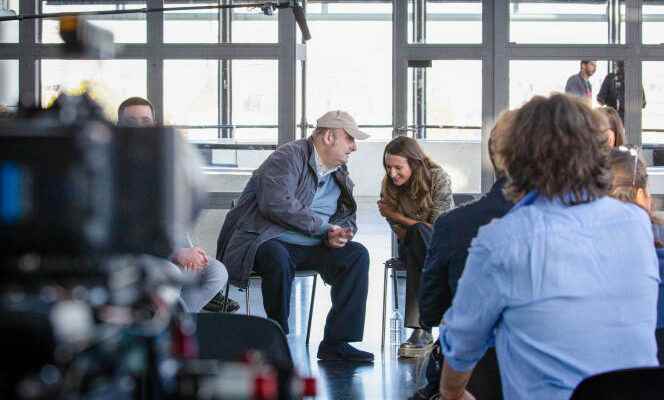On is rarely surprised while watching TV. In the station, the journalists speak like connected speakers and the guests, just as robotic, respond to them by delivering their arguments to the tune of authenticity. So, when you stumble upon “Les Rencontres du Papotin” (France 2), you immediately feel that you are there facing something profoundly different, a space where speech seems to have freed itself from its chains, twirling between pure poetry and disarming sincerity.
Broadcast on the public service since the start of the school year and launched by filmmakers Eric Toledano and Olivier Nakache, this interview magazine uses the principle of the paper newspaper The Papotin (random publication), whose editorial staff includes around fifty non-professional journalists with autism spectrum disorders (ASD). This time in front of the cameras, these amateurs, in reality much more insightful than the “pros”, interview a personality, with a single rule of conduct: “We can say anything to the “Papotin”, but, above all, anything can happen! »
Looking at the inaugural issue with Gilles Lellouche, we understand that we are not there faced with an adulterated promise. First question (actually a statement): “You are old! – Yeah, I’m old! »replies the actor, surprised and amused. “Why are you old? »continues the interviewer, tough. “Well, I’m old, because I couldn’t hold back time. » When we approach the career aspect, the questions are just as surprising: “How did you take over the role of Martin, in Cars 2, when the first voice actor died? » Indeed, becoming the understudy of a deceased who overtook a tow truck, it cannot be considered lightly.
Unexpected and heroic questions
Sometimes the turns of phrase are unusual, resembling haikus. “How are you, Gilles, as you are alive? It was hard after the dented shoot…”, asks Claire, leaving the actor taken aback (are we still talking to him about his role as a tow truck?). This set of unexpected and heterogeneous questions is almost reminiscent of the Voight-Kampff test which, in the film blade runner (1982), makes it possible to determine whether we are dealing with a human or a replicating robot. While he was called “Gilbert Lellouche” and was told that we preferred him ” Jean Dujardin “ without flinching, the actor was able to show a touching humanity, making it known that he loved cassoulet, thought every day of his deceased father and was bored in the company of overly serious adults.
You have 28.91% of this article left to read. The following is for subscribers only.
